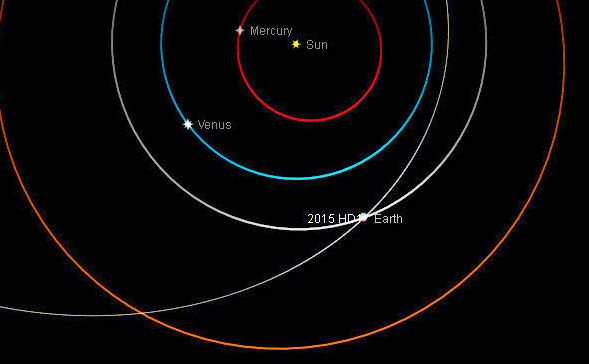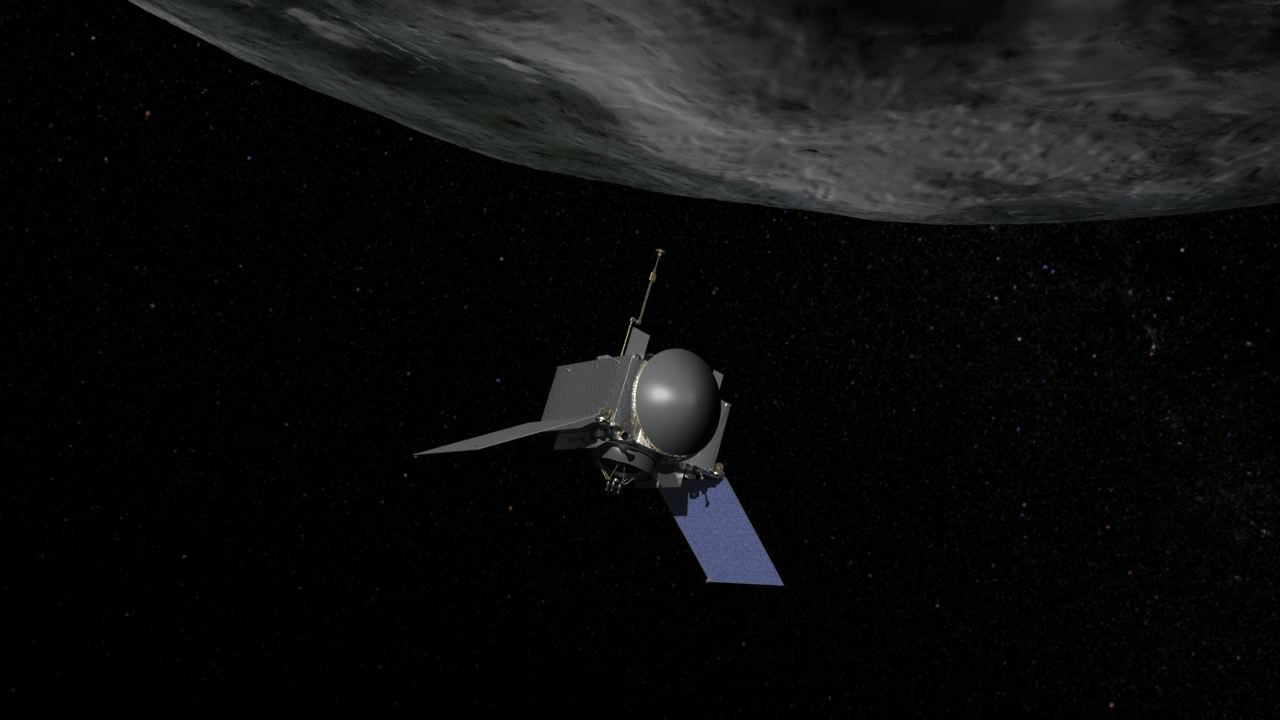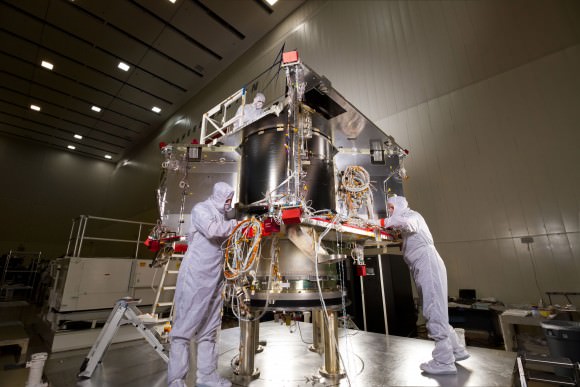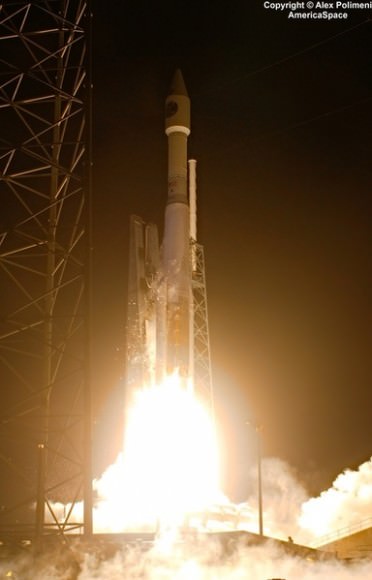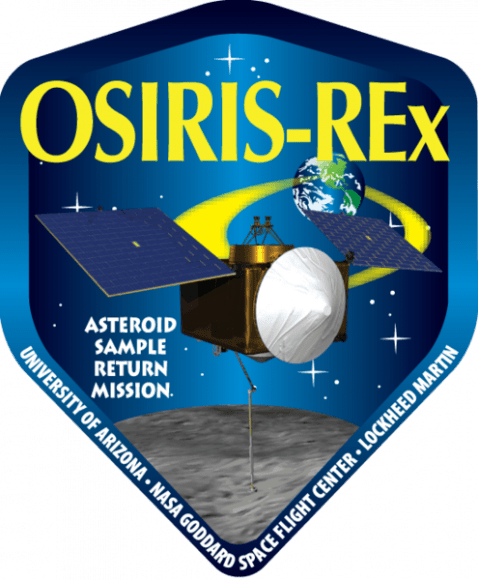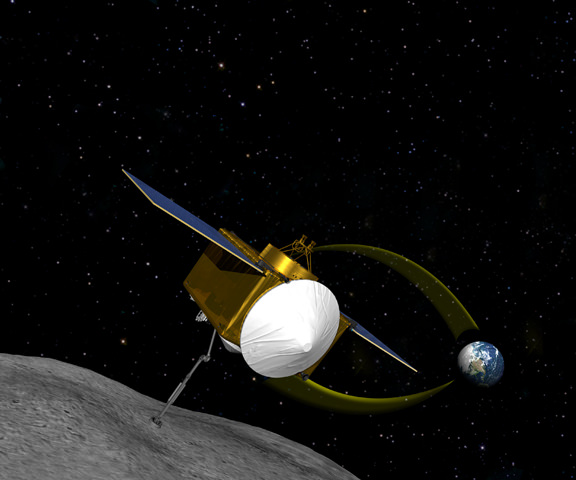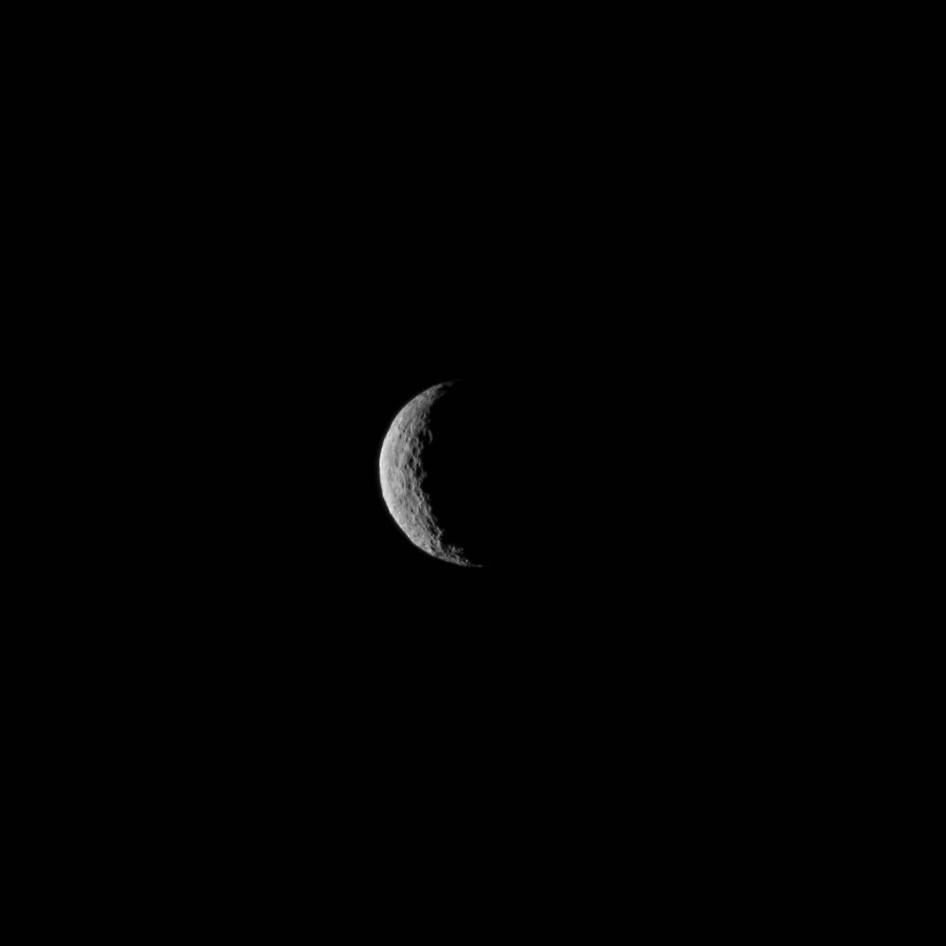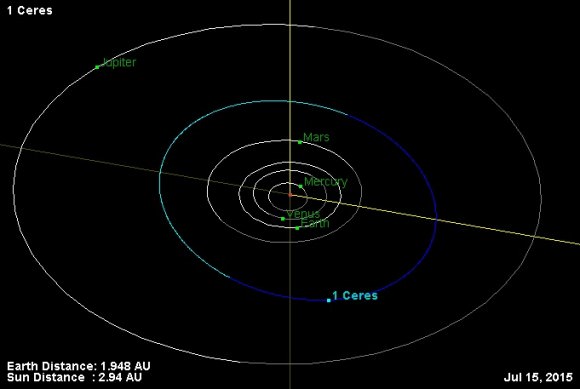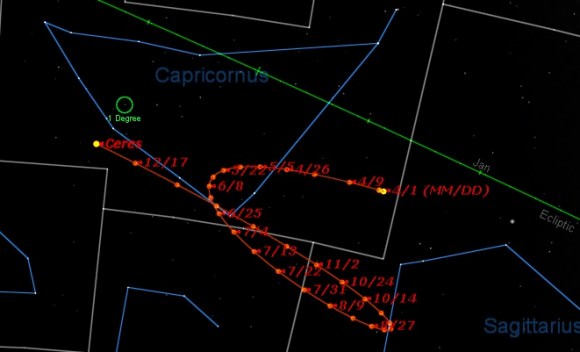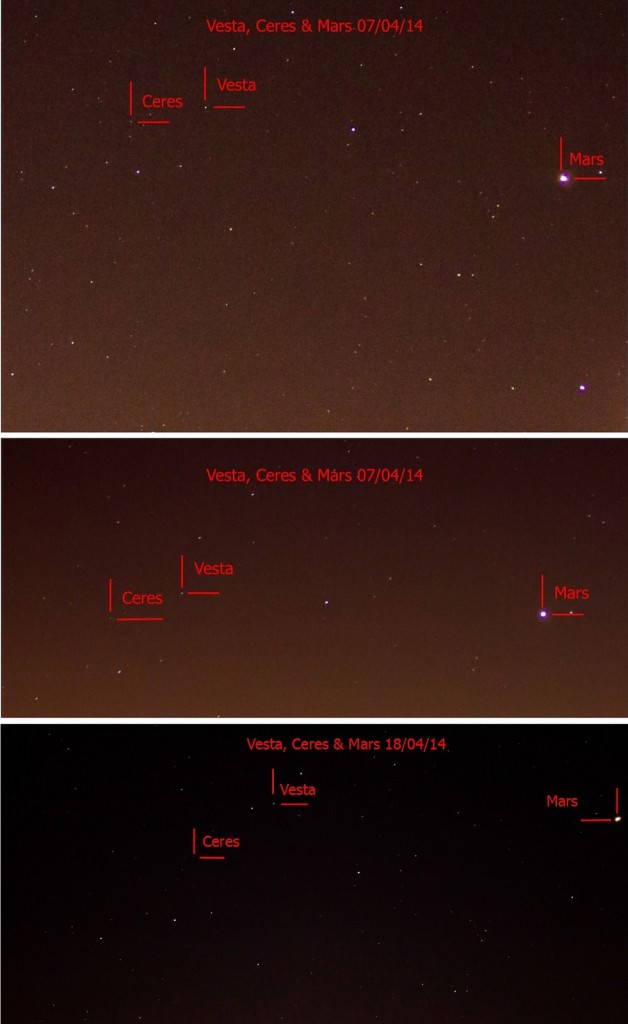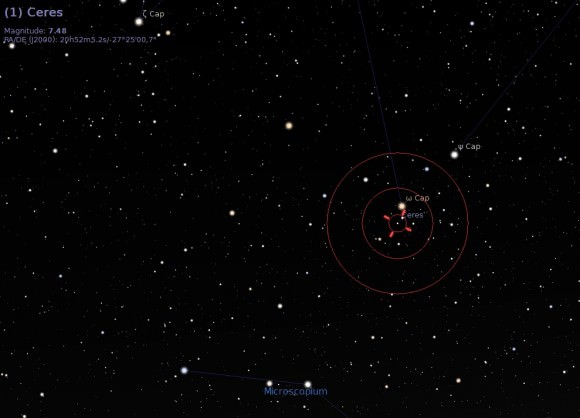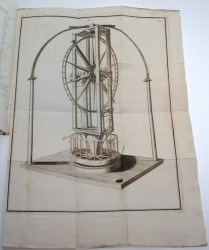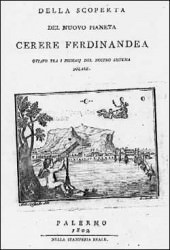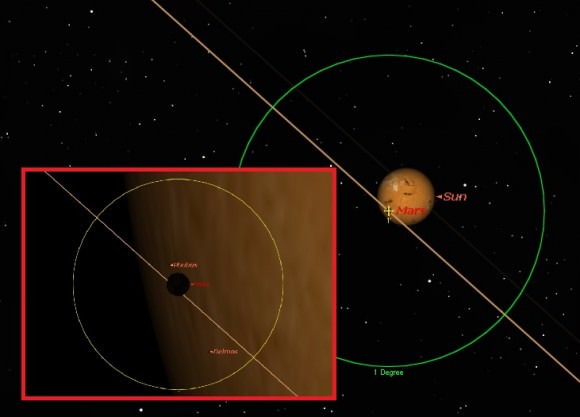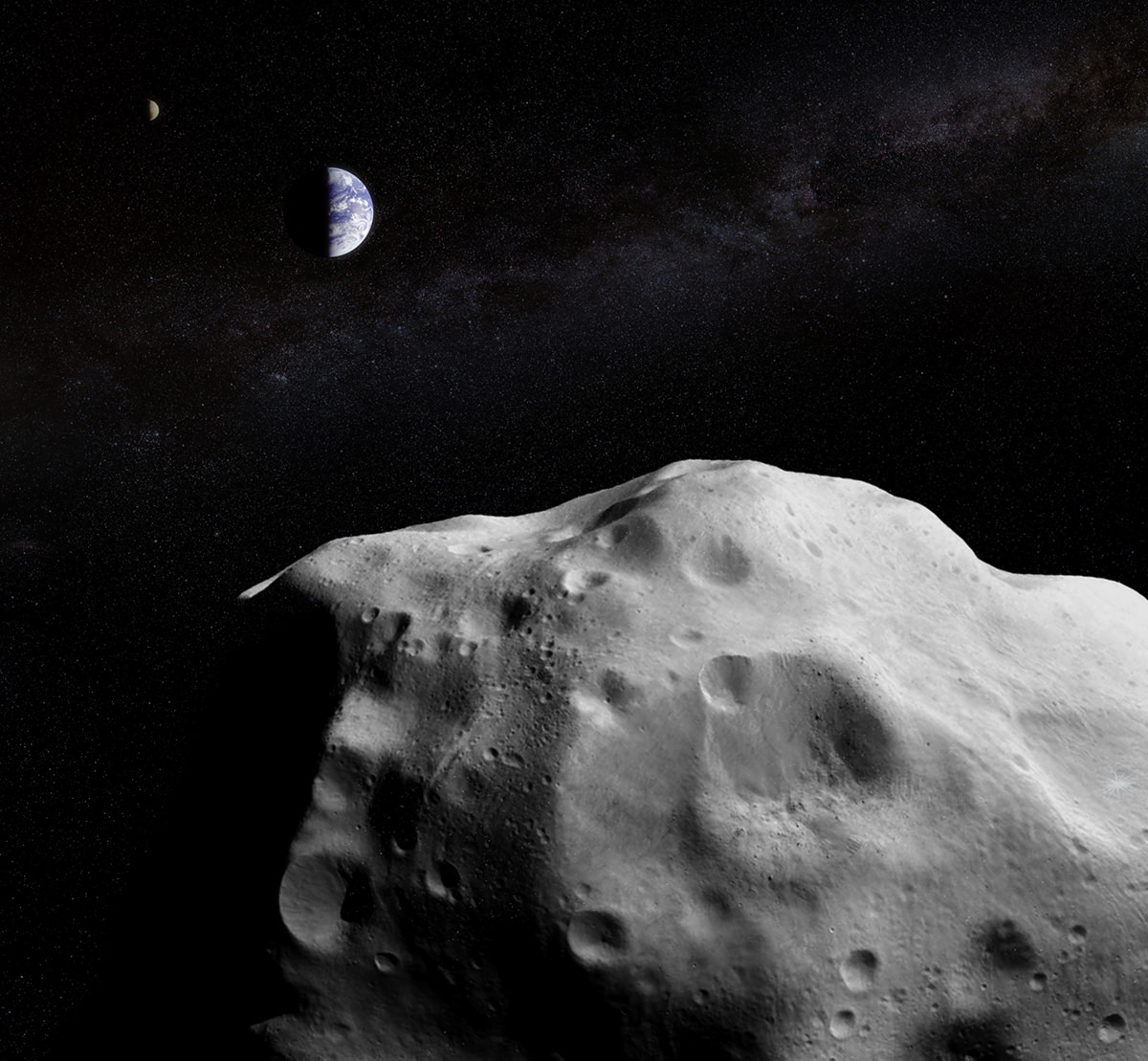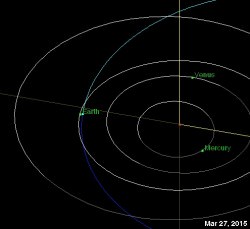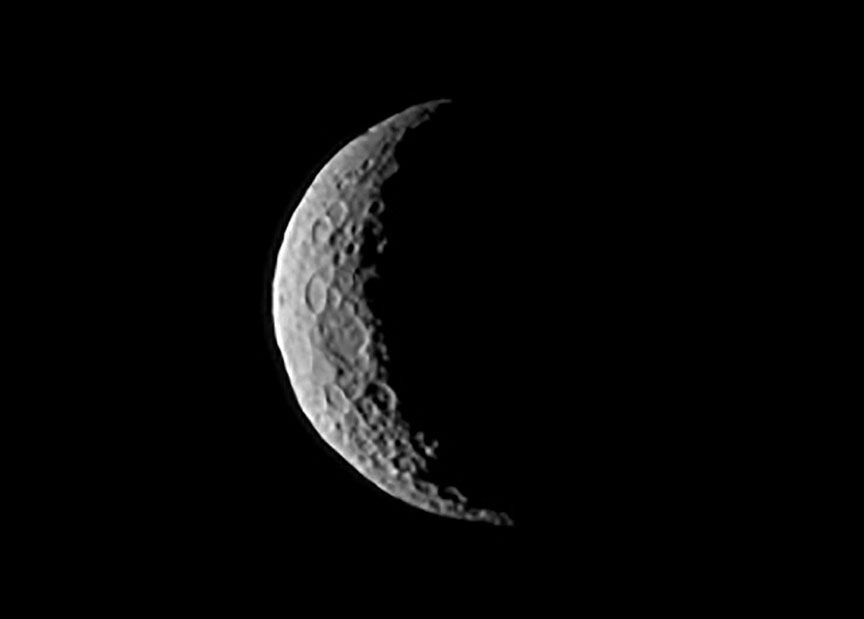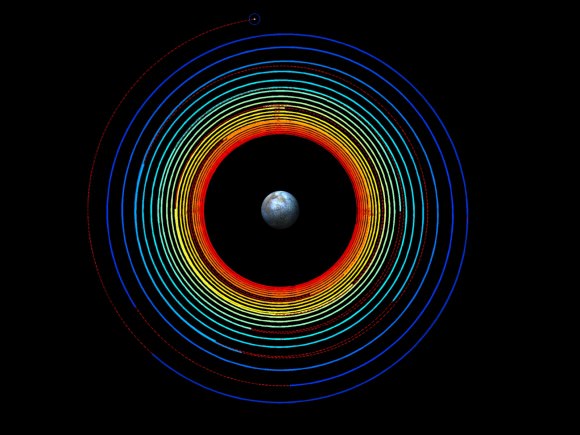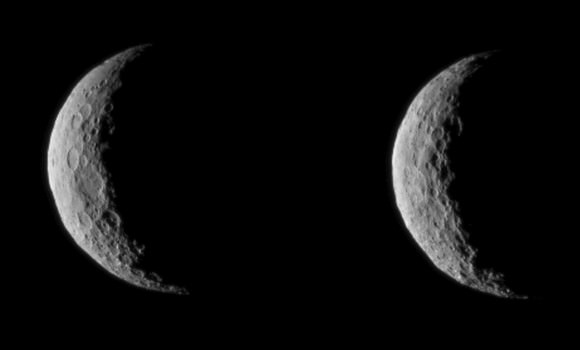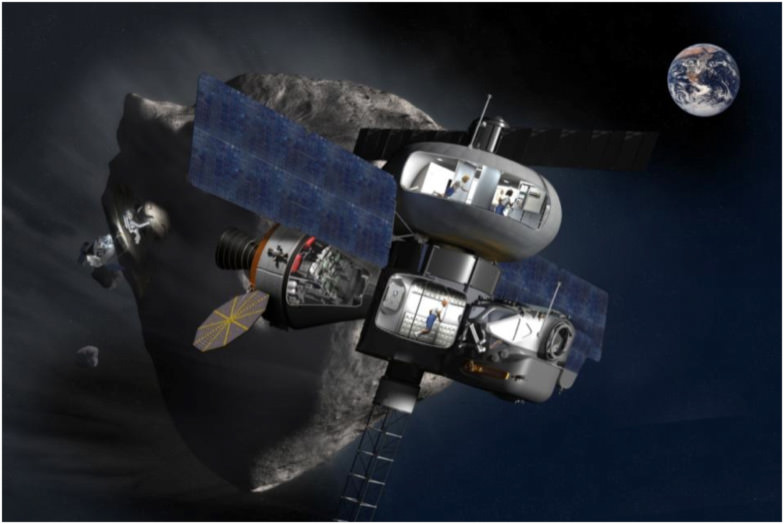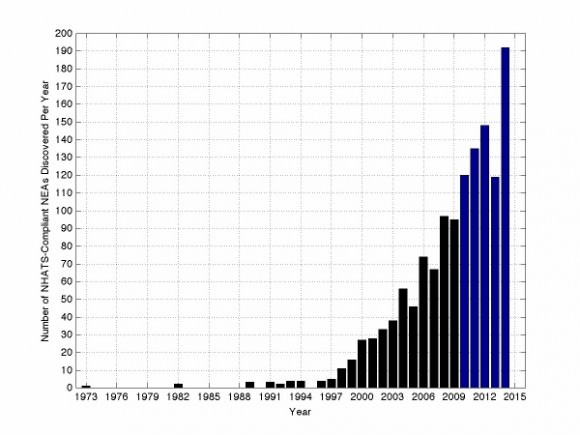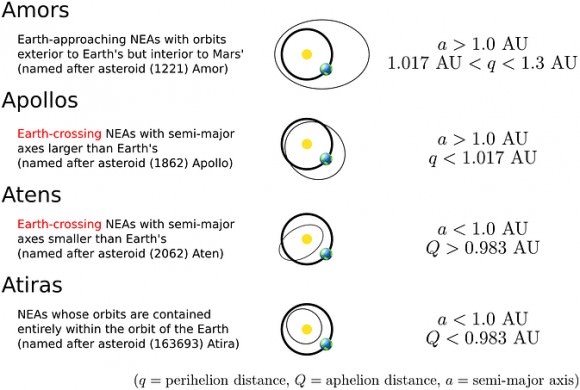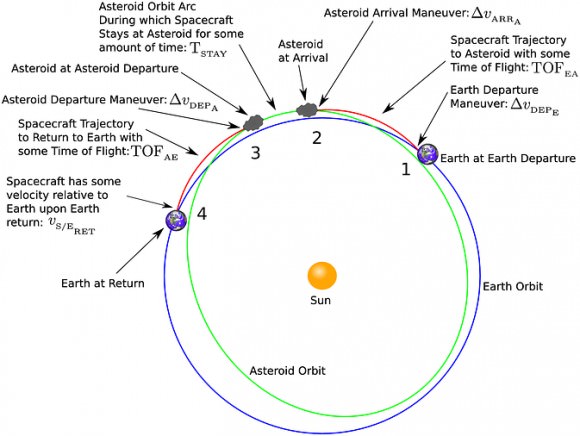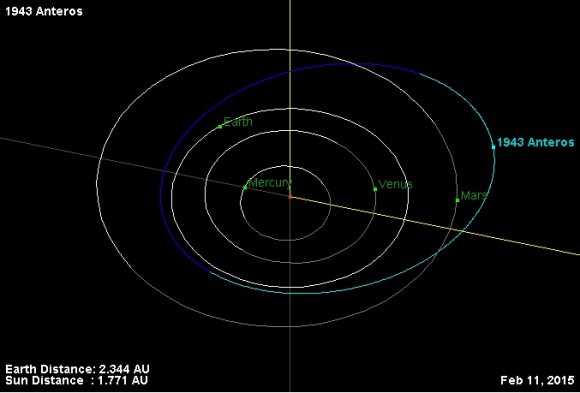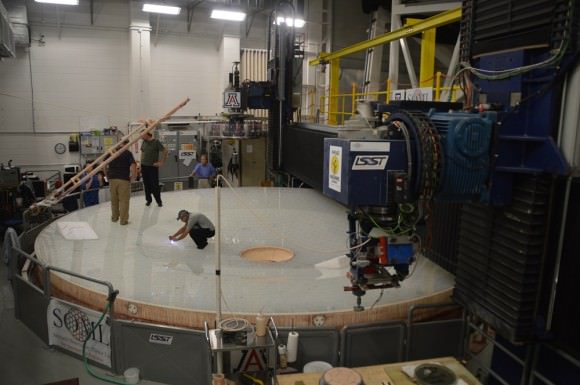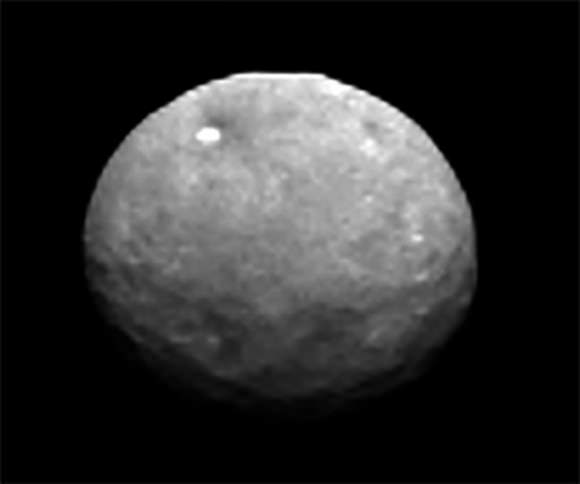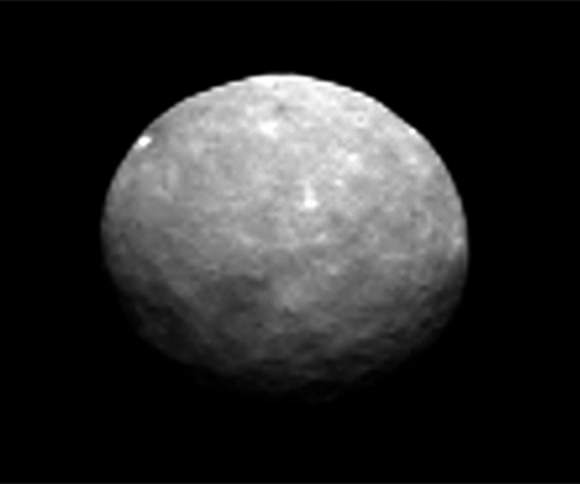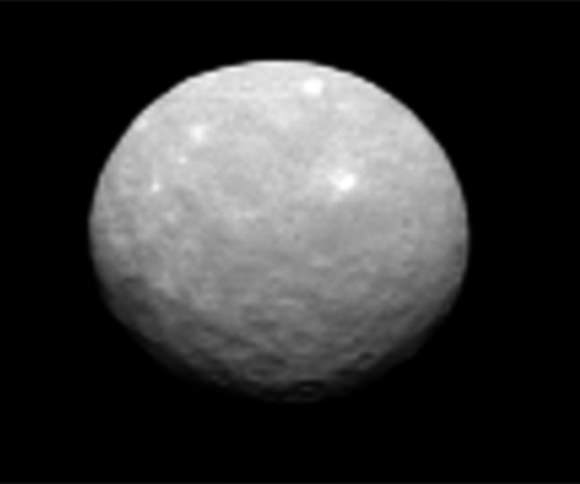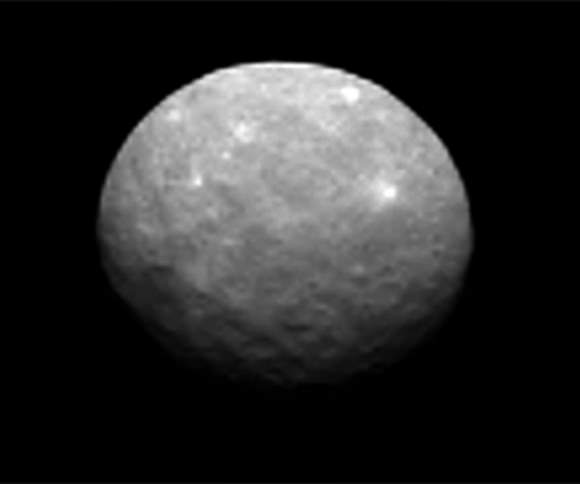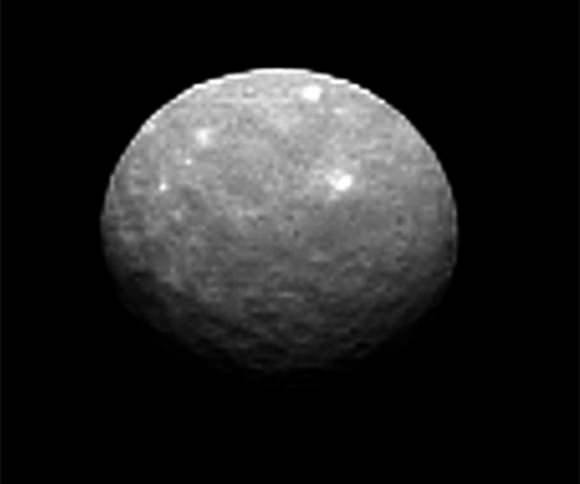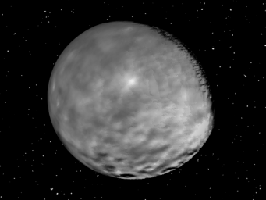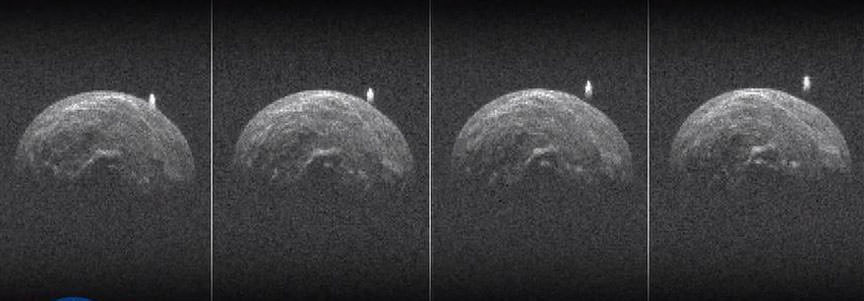If you wake up in the middle of the night with weird dreams about flying asteroids, I wouldn’t be surprised. Around 3 a.m. (CDT) tomorrow morning April 21, a 50-foot-wide asteroid will hurdle just 0.2 lunar distances or 45,600 miles over your bed.
The Mt. Lemmon Survey, based in Tucson, Arizona, snagged the space rock Saturday. 2015 HD1 is about as big as a full grown T-rex through not nearly as scary, since it will safely miss Earth … but not by much.
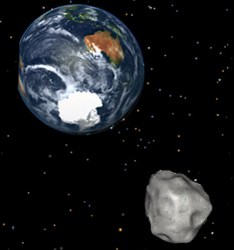
Geostationary satellites, used for global communications, weather forecasting and satellite TV, are parked in orbits about 22,300 miles above the Earth. 2015 HD1 will zip by at just twice that distance, putting it in a more select group of extremely close-approaching objects. Yet given its small size, even if it were to collide with Earth, this dino-sized rock would probably break up into a shower of meteorites.
Lucky for all of us, astronomers conducting photographic surveys like the one at Mt. Lemmon rake the skies every clear night, turning up a dozen or more generally small, Earth-approaching asteroids every month. None yet has been found on a collision course with Earth, but many pass within a few lunar distances.
A common misunderstanding about approaching asteroids concerns Earth’s gravity. While our planet has plenty of gravitational pull, it’s no match for speedy asteroids. We can’t “pull” them in like some tractor beam.
Because they’re moving at miles per second velocities, they have lots of angular momentum (desire to keep moving in the direction they’re headed). Only asteroids headed directly for us have any hope of striking our atmosphere and potentially leaving fragments behind as meteorites.
Still, both Earth and asteroid interact. Close-approaching asteroids often will have their orbits altered by Earth’s gravity. They come in in one direction and leave on a slightly different one after Earth weighs in (literally!)
All the known asteroids orbiting the Sun – in 3D
Moving rapidly across the constellations Hydra, Antlia and Puppis tomorrow morning, 2015 HD1 is expected to reach climb briefly to magnitude +13.2. That’s faint, but with a good map, amateur astronomers with 8-inch or larger telescopes will see it move in real time across the sky like a slow satellite. To create a map, you’ll need sky-charting software like MegaStar, The Sky or Starry Night and these orbital elements.
Maximum brightness and visibility occurs between about 1 and 3 a.m CDT (6-8 UT) for observers in low northern or southern latitudes. From the West Coast, the asteroid will be low in the southwestern sky around 10 p.m. local time. Hawaiian skywatchers will get the brightest views with the asteroid highest in the sky around 9 p.m. local time. IF you live in the eastern two-thirds of the U.S., it’s either too far south or will have set by the time it’s bright enough to see.
No worries. Italian astronomer Gianluca Masi will once again fire up his telescope to provide live views of 2015 HD1 on his Virtual Telescope Project website today April 20 starting at 4 p.m. CDT (21:00 UT). So if you like, you can get a gander after all.

